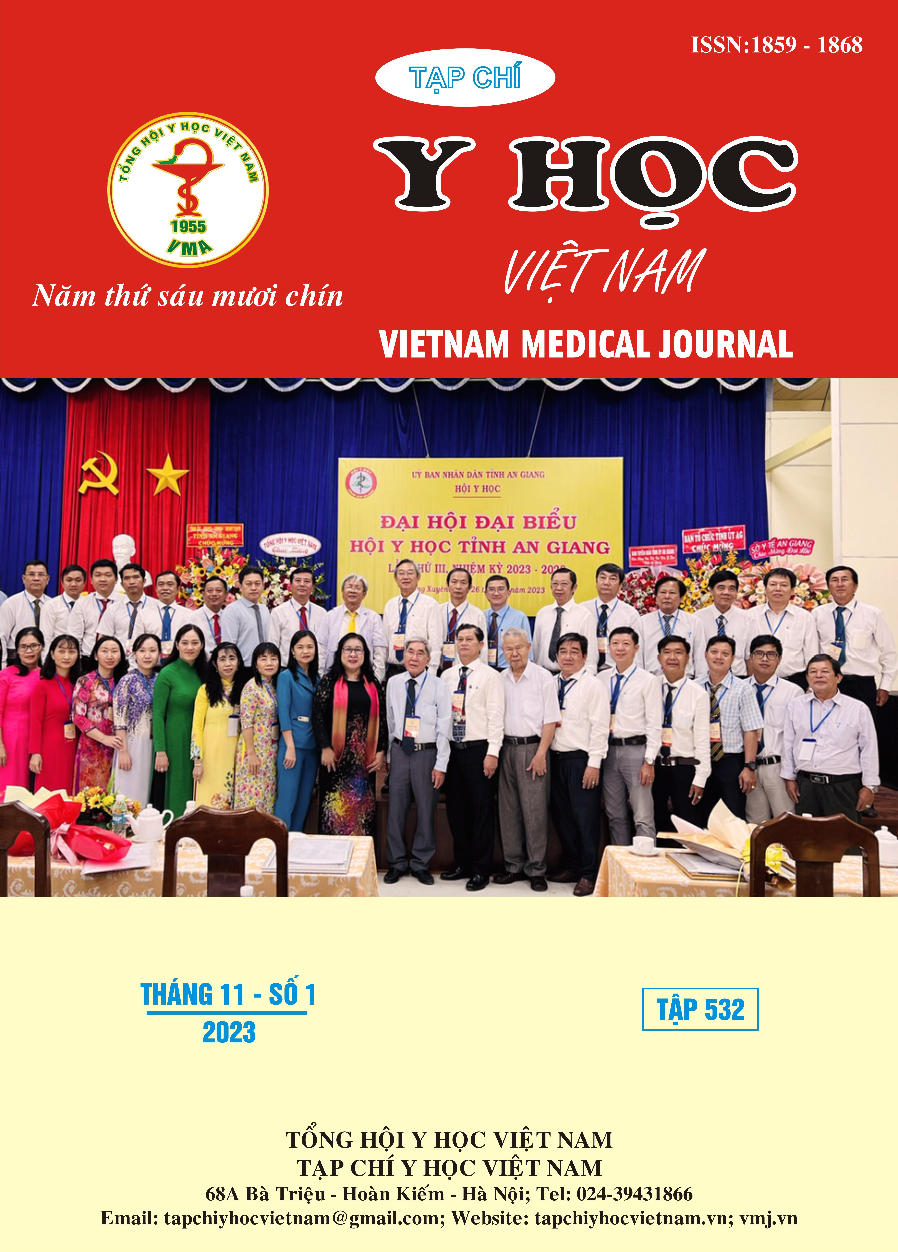ASSOCIATED FACTORS WITH SEVERITY OF BIRTH ASPHYXIA AMONG NEWBORNS
Main Article Content
Abstract
Aim: Perinatal asphyxia is one of common causes of neonatal morbidity and mortality. Therefore, we conducted this study with specific aims to investigate several factors associated with severity of birth asphyxia. Methods: A cross-sectional descriptive study carried out with 120 asphyxiated neonates admitted at the Neonatal Intensive Care Unit in Hue Central Hospital, Hue City, from May 2020 to July 2022. Results: There were 120 asphyxiated neonates, 49,2% were preterm neonates, 50,8% were term neonates. Severe asphyxia was accounted for 33,3%, and moderate asphyxia was 66,7%. Meconium stain amniotic fluid, abruptio placenta, abnormal fetal presentation, prolapsed cord, preeclampsia, mother with general anesthesia had a significant association with severe asphyxia in univariate analysis (p<0,05). Using multivariate analysis, we found that preeclampsia, mother with general anesthesia, abruptio placenta, abnormal fetal presentation remained independent risk factor for severe asphyxia (p < 0,05). Conclusion: Improvement of antenatal care is needed to identify and manage of conditions that could be threatening to the babies at birth, especially in high-risk preganancy such as preeclampsia, abruptio placenta. Furthermore, neonatal resusciation needs to prepare properly and to support imediately in the delivery room to all newborn, especially birth asphyxia to reduce severity as well as consequences of asphyxia.
Article Details
Keywords
birth asphyxia, asphyxiated neonates, risk factors.
References
2. Gebregziabher, G.T., F.B. Hadgu, and H.T. Abebe, Prevalence and associated factors of perinatal asphyxia in neonates admitted to ayder comprehensive specialized hospital, Northern Ethiopia: a cross-sectional study. International Journal of Pediatrics, 2020.
3. Võ Thị Tú Lam, Nghiên cứu mô hình bệnh tật và tử vong ở trẻ sơ sinh tại trung tâm Nhi bệnh viện Trung ương Huế, Luận văn thạc sỹ khoa học Y - Dược, Trường Đại học Y khoa Huế - Đại học Huế, Huế, 2020.
4. World Health Organization. South East Asia Region, South East Asia Regional Neonatal-Perinatal Database. 2010: SEAR-NPD, 2007 - 2008.
5. Bộ Y Tế (2015), Hướng dẫn chẩn đoán và điều trị các bệnh Sản Phụ khoa, Quyết định số 315/QĐ-BYT ngày 29/01/2015, Hà Nội, tr. 29-34, 39-42, 43-46, 54-55, 227-233.
6. Naeye, R.L., Underlying disorders responsible for the neonatal deaths associated with low Apgar scores. Neonatology, 1979. 35(3-4): p. 150-155.
7. Tasew, H., et al., Risk factors of birth asphyxia among newborns in public hospitals of Central Zone, Tigray, Ethiopia 2018. 2018. 11: p. 1-7.
8. Awad, A.H., D.Y. Mansour, and S.M. Habib, Maternal and Fetal Outcome of Placenta Previa Patients Attending Ain-Shams University Maternity Hospital: Prospective Study. Evidence Based Women's Health Journal, 2021. 11(4): p. 295-300.
9. Ilah, B.G., et al., Prevalence and risk factors for perinatal asphyxia as seen at a specialist hospital in Gusau, Nigeria. Sub-Saharan African Journal of Medicine, 2015. 2(2): p. 64.


